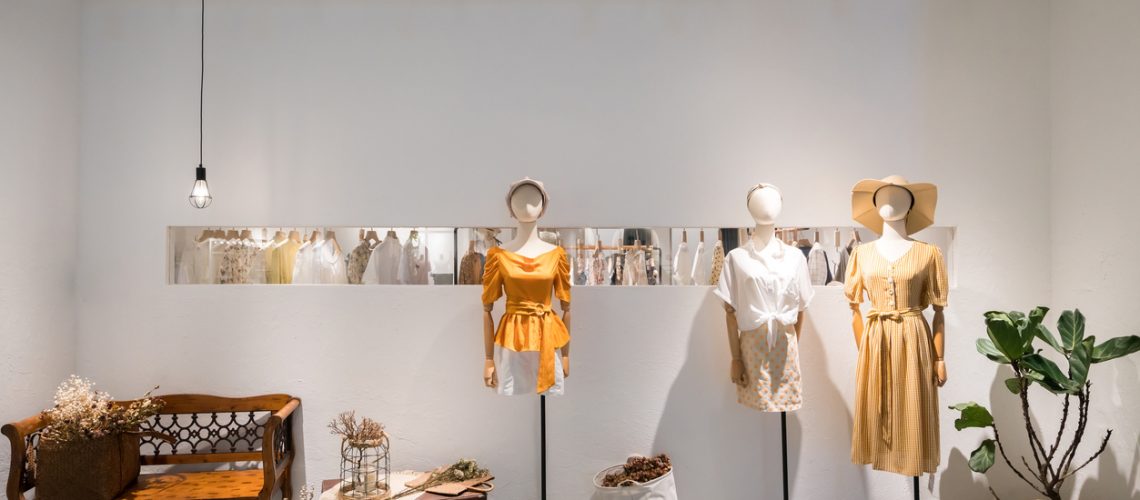Elevate Your Closet with Stunning Boutique Fashion Essentials
Elevate Your Closet with Stunning Boutique Fashion Essentials
Blog Article
A Deep Dive Into the Globe of High-Fashion Runways: Recognizing Apparel as Art
Designers, much like skillful artists, weave intricate narratives through shade, type, and material, challenging standard standards and redefining elegance standards. As we check out these sartorial eyeglasses, we must contemplate: what role does style play in shaping social worths, and how does it mirror the ever-changing tapestry of human feeling and identity?
The Development of Runway Reveals
The trajectory of runway programs has actually changed considerably over the years, developing from special sector events to fascinating spectacles that blend style with art. Generally, path programs were intimate affairs, kept in ateliers or little places, largely attended by customers and market experts. These early presentations concentrated on the garments' workmanship and industrial practicality, offering a functional and direct display screen of seasonal collections.
As the fashion sector broadened, the nature of path programs started to alter. The 1970s and 1980s marked a transforming factor, with developers seeking to distinguish themselves via even more staged presentations.
Over the last few years, technology and social media sites have actually additionally changed runway shows, making them easily accessible to an international target market. Livestreaming and electronic systems have democratized fashion, allowing fanatics worldwide to witness these events in real-time (boutique fashion). This development shows a wider cultural change, where high-fashion runways function as a vibrant intersection of development, style, and performance
Designers as Visionary Artists
Developers in the high-fashion sector have blurred the lines between useful garment development and the conceptual world of art. By welcoming imaginative techniques such as sculpture, paint, and progressive installments, developers craft garments that test standard fashion norms and elevate them to art kinds.
Visionary developers draw ideas from a myriad of sources, consisting of abstract art, historical referrals, and individual narratives. They have an unique ability to visualize and appear ideas that press the borders of standard style, often redefining visual standards in the procedure. This creative ingenuity is showcased with dramatic shapes, cutting-edge products, and elaborate workmanship, which welcome customers to experience style as more than just wearable things.
Moreover, the path acts as a canvas for these artists, where lighting, songs, and established style coalesce to create immersive experiences. These presentations are not simply display screens of apparel but are managed efficiencies that evoke feeling and provoke idea, verifying the developer's role as a true artist in the contemporary cultural landscape.
Cultural Impacts in Fashion
Cultural tapestry weaves its complex patterns into the textile of style, affecting designers around the world. The dynamic interchange of cultural tales, customs, and icons educates and influences collections that elegance high-fashion paths.
The influence of culture on fashion is frequently seen in the reinterpretation of standard garments and patterns. The usage of Japanese robes, Indian saris, or African prints in modern fashion mirrors a mix of social authenticity and modern looks. Developers such as Valentino's Pierpaolo Piccioli and Alexander McQueen's Sarah Burton have been understood to include abundant cultural themes right into their couture collections, equating history right into wearable art.

Innovation in Textile and Design
Advancement in textile and layout consistently improves the landscape of high-fashion, pressing borders and redefining opportunities. Over the last few years, technological developments have actually considerably added to this evolution, presenting products that challenge typical perceptions. Textiles ingrained with wise fibers, with the ability of changing shade or managing temperature level, are no more confined to the world of sci-fi. Designers are increasingly exploring the integration of modern technology, such as 3D printing, which enables the production of intricate frameworks that were formerly unimaginable.
In addition, sustainability has actually ended up being a pivotal motif in material advancement. The fashion industry is seeing a rise in the use of environment-friendly materials, stemmed from recycled plastics, natural fibers, and also eco-friendly elements. These innovations not only provide new structures and looks but also address crucial environmental issues. Developers are welcoming these materials to craft garments that are both visually striking and mindful of their environmental footprint.
In regards to design, experimental forms and avant-garde shapes are continuously transforming the path. By including cutting-edge methods and unique products, designers cultivate garments that obscure best site the line in between style and art, establishing new criteria for creative thinking and expression in the high-fashion sphere.
Effect of Style on Culture
Fashion wields an extensive impact on society, offering as both a reflection of social identification and a catalyst for social change (boutique fashion). With its development, style has actually mirrored social shifts, encapsulating the zeitgeist of various ages.
In addition, fashion has the power to bridge cultural gaps, fostering understanding and recognition among diverse teams. As globalisation increases, the cross-cultural exchange of style ideas becomes increasingly considerable, advertising inclusivity and diversity. The surge of streetwear, stemming from metropolitan subcultures, shows just how style can go beyond socio-economic limits, approving individuals a method of self-expression and empowerment.
Essentially, style is not just concerning aesthetics; it is a dynamic force that affects values, attitudes, and societal progression (boutique fashion). By constantly communicating with social and social currents, fashion remains an integral component of the cumulative human experience

Conclusion
High-fashion paths act as vibrant fields where apparel transcends capability to end up being an expressive art type. Designers, comparable to visionary artists, coordinate collections that reflect identity, feeling, and cultural stories, testing standard aesthetics. The fusion of innovative fabric and that site layout, paired with sophisticated collection styles, lights, and music, creates immersive experiences that commemorate cultural variety. This intersection of style and artistry not just mesmerizes target markets worldwide however likewise affects societal understandings and promotes a deeper admiration for social diversity.

Social tapestry weaves its detailed patterns right into the material of style, affecting developers globally.Style wields an extensive influence on culture, offering as both a reflection of cultural identity and a stimulant for social change.
Report this page